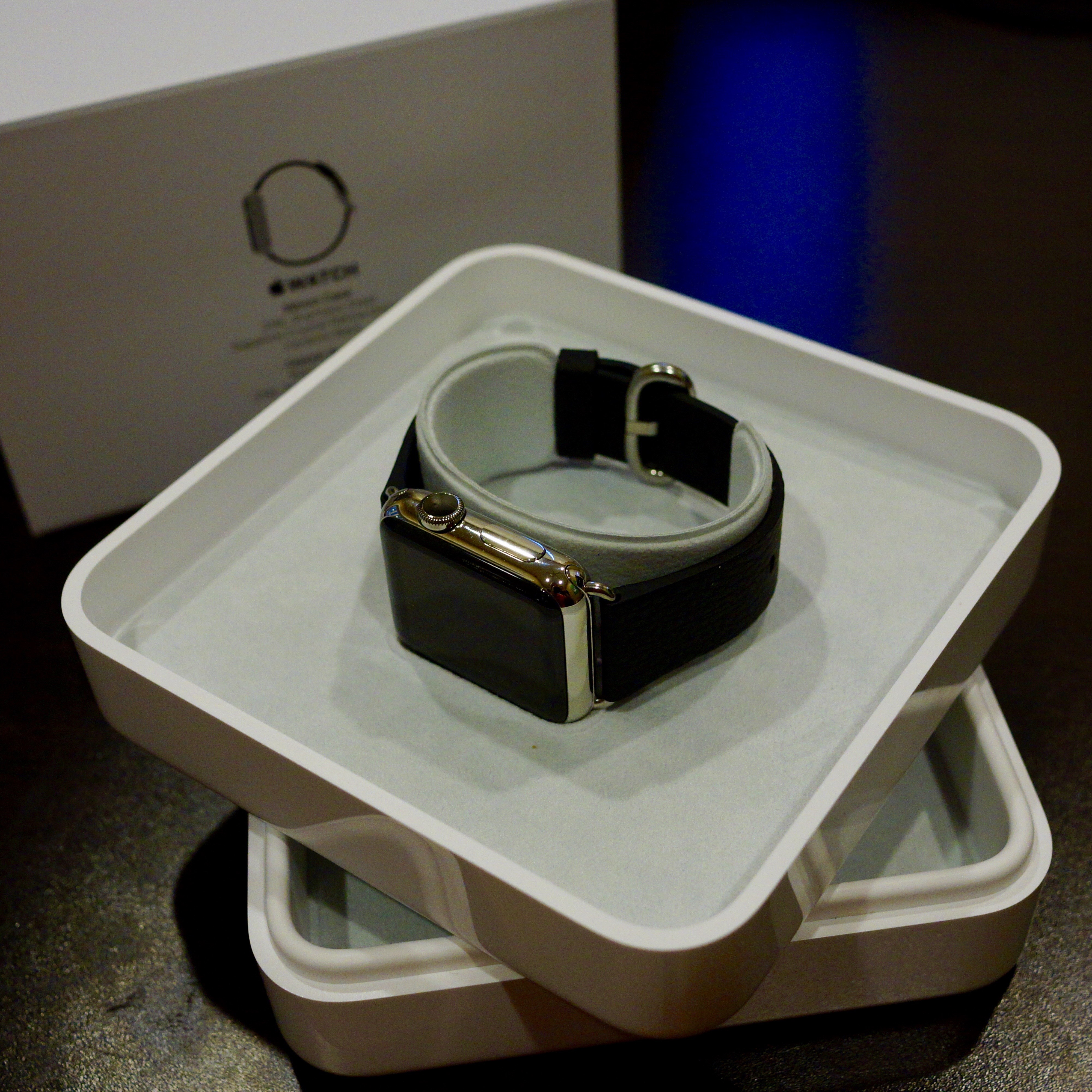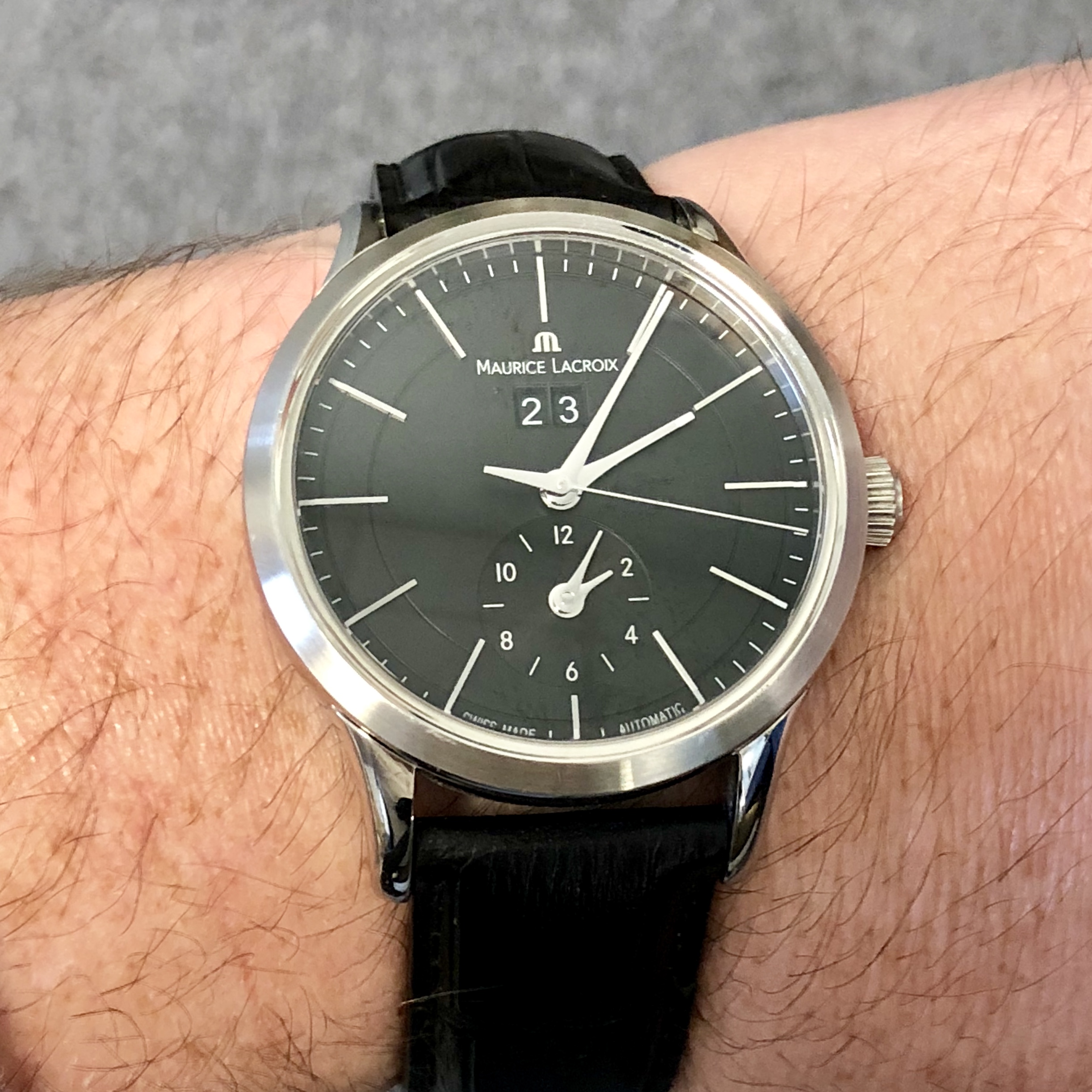GMT or multi-timezone watches are one of my favorite complications, but many are so complex (with additional hands and dials) that they’re hard to use. Not so the Nomos Tangomat GMT with its integrated pushbutton time zone feature. In fact, you’d be forgiven for overlooking this handy and well-executed complication despite the clean Germanic look of the Nomos!

Technically speaking, a GMT watch is designed to be set to Greenwich Mean Time while allowing the hour hand (and related date complications) to be adjusted for another timezone as needed. Many GMT watches feature two visible hour hands, sometimes with a subdial or 24 hour scale for GMT or “home” time, making them “dual timezone watches” as well. Then there are “worldtimer” watches which show the time in most or all timezones at once.
The Nomos Tangomat GMT is unusual among GMT watches in that the “home” time is displayed in a window at 3:00 where one expects the date to be. Another window at 9:00 shows the current timezone. But neither of these apertures really call attention to themselves. Indeed, only the small seconds subdial stands out to the casual observer.
Although the actual GMT is not displayed anywhere, the Nomos Tangomat GMT is a true GMT watch. It is “calibrated” to GMT, then the preferred home time zone is set using a small inset corrector at 8:00. This is the time displayed in “rising hours” style on a 24 hour wheel. From then on, the large pusher at 2:00 can be used to advance the central hour hand through 24 timezones around the world, indicated with major airport codes.
It’s always interesting to observe the politics of worldtimer watches: Which city will be displayed for popular timezones? The Tangomat GMT is no exception, preferring BER (Berlin) to all other central European cities for GMT+1, MEX to Chicago for GMT -6, and HKG for all of China. Changing timezones also present a problem: My 2014 model Tangomat GMT uses DOH for GMT+3 and MOW for GMT+4, but now that Moscow has reverted one hour, newer models use MOW and DXB for those timezones, leaving Qatar out cold.

The Tangomat GMT reflects quirky Nomos design principles: The slab-sided, narrow bezel design looks larger than the 40 mm diameter and 10.85 mm thickness and the sharply angled lugs aren’t really much help, flying out off the wrist. But somehow all these sharp corners wear better than expected, with the watch riding high but not uncomfortably so. The Horween shell cordovan strap is amazing once it breaks in, even though horse leather seems a bit odd. The timezone button isn’t super smooth, often catching internally when rushed, but the crown is buttery for winding and setting.

The technology of the movement is another highlight. Although based on the architecture of the classic Peseux 7001, Nomos movements are constructed largely in-house and feature many technical innovations. My Tangomat GMT has the company’s third-generation movement base with automatic winding and the worldtimer/GMT function integrated instead of the date wheel. This “Xi” calibre was updated shortly after I purchased my watch with the company’s in-house “Swing System” and renamed DUW 5201.
The movement is nicely decorated, with a classic Glashütte three-quarters plate under the winding rotor, blued screws, and perlage. It really contrasts with the simple case and dial design!

Nomos is something of a darling among watch enthusiasts, recognized for their sense of design, technical credibility, and value. And the Tangomat GMT reflects all of these qualities. MSRP is $4,920, which is quite inexpensive for a specialty watch with a complicated manufacture movement and such solid build quality.
I’m wearing and blogging about a different watch from my collection each day of April, 2018. Check back here for our “Watch A Day” series, follow us on Twitter and Instagram, and like us on Facebook!
Year
Country
Brand
Style
Material
Movement






Leave a Reply